Senior Dog Care
Introduction
Watching your dog grow older is a deeply emotional experience. The playful energy that once filled every room may slow down, but your bond only grows stronger. As dogs enter their senior years, they depend more than ever on your support, patience, and understanding. Senior dog care goes far beyond meeting basic needs, it’s about helping your dog age with dignity, comfort, and joy.
Aging in dogs doesn’t happen overnight. It’s a gradual process that can begin as early as age seven, depending on the breed and size. Large breeds typically reach their senior stage sooner than smaller ones. You may notice subtle changes: slower movement, cloudy eyes, or a longer nap schedule. These signs are your cue to start adjusting routines and paying closer attention to their health.
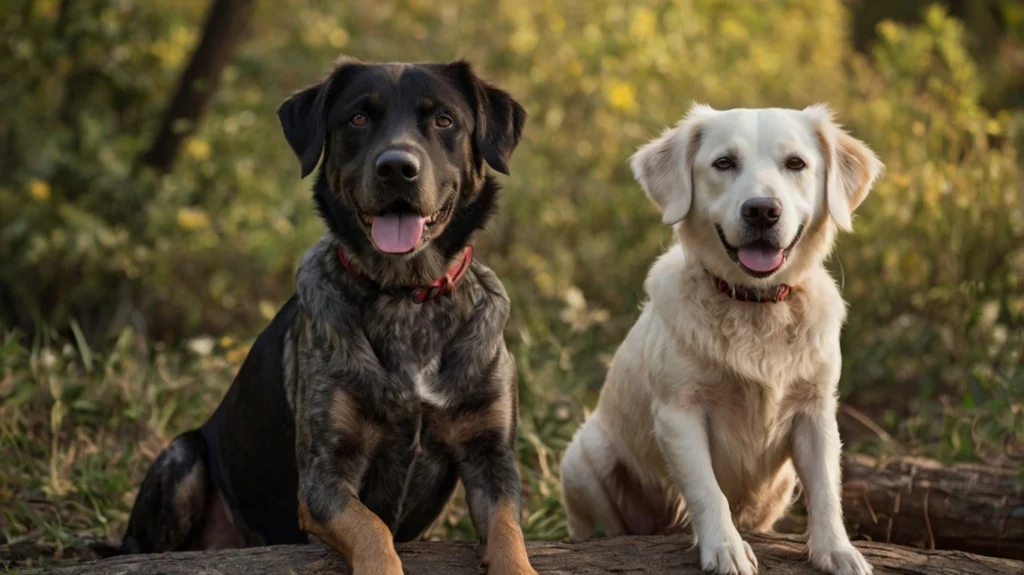
One of the most important shifts involves lifestyle and daily habits. Your senior dog may no longer need intense exercise, but they still benefit from gentle walks, mental stimulation, and consistent routines. Simple changes like orthopedic beds, elevated food bowls, or non-slip rugs can significantly improve their comfort at home.
Equally important are health-related considerations. Dog weight management becomes critical as extra pounds can strain joints and worsen age-related issues. On the behavioral side, don’t underestimate the value of training older dogs. Even basic commands or short, engaging exercises help keep their minds active and strengthen your connection.
This guide is designed to help you navigate the later stages of your dog’s life with clarity and compassion and show you how to care for an old dog. Whether you’re exploring the best ways to manage your dog’s weight, looking for age-appropriate training methods, or simply seeking better ways to care for your senior companion, you’ll find practical, caring advice in the sections that follow.
Table of Contents
Understanding Dog Weight Management for Senior Dogs
As dogs age, their bodies naturally begin to slow down. They become less active, burn fewer calories, and may even sleep more than usual. This decline in energy is completely normal, but it also means pet owners must pay close attention to one of the most important aspects of senior health dog weight management.
When a senior dog gains excess weight, it’s more than just a cosmetic issue. Carrying even a few extra pounds can place unnecessary stress on their joints, worsening arthritis or hip problems. It can also put strain on the heart and lungs and raise the risk of chronic diseases like diabetes. On the flip side, some senior dogs may begin to lose weight due to muscle loss or medical conditions, which is just as concerning and deserves immediate attention.
Monitoring your dog’s weight should become a regular part of your care routine. A quick check at home once a month can help you notice changes early. You should be able to feel your dog’s ribs with a gentle touch, and their waist should still show a noticeable curve when viewed from above.
Understanding what causes weight fluctuations is key. Reduced metabolism, changes in appetite, and certain medications can all impact your dog’s size. That’s why dog weight management isn’t just about adjusting food, it includes tailored exercise, proper feeding times, and vet support to ensure your dog is getting the nutrients they need without overloading on calories.
Ultimately, managing weight in older dogs is about maintaining balance. It’s not about making them thin or overly active, it’s about helping them stay mobile, comfortable, and healthy well into their golden years.
Effective Tips for Dog Weight Management
How to care for an old dog? means being proactive about their health, and managing their weight is a vital part of that. Dog weight management in senior pets isn’t about strict dieting. It’s about making smart, sustainable choices that help your dog feel better and stay mobile.
Adjust Portions and Prioritize Nutrients
One of the most common mistakes in senior dog care is continuing the same feeding routine used in their younger years. As dogs grow older, they become less active and burn fewer calories. This means their diet should shift toward high-quality food with controlled portions. Instead of feeding based on habit or guesswork, measure each meal carefully and reduce treats that add unnecessary calories.
Senior dogs benefit from lean proteins, omega-3 fatty acids for joints, and fiber to aid digestion. Skip foods with fillers or too many carbohydrates. If you’re unsure which diet suits your dog best, your vet can help you choose a formula made for aging bodies.
Keep Them Moving Safely and Consistently
While senior dogs may become less active, regular movement remains important. Daily short walks, light play, or even gentle swimming can support dog weight management and improve circulation. The key is consistency, twenty minutes a day is more effective than random bursts of activity. Pay attention to your dog’s energy levels, and avoid pushing them too hard.
Monitor Progress and Reassess Often
Every senior dog is different. Weigh your dog monthly, watch their body shape, and observe any changes in energy or appetite. If your dog is gaining or losing weight unexpectedly, it could signal a medical issue or a need to adjust their routine.
Ultimately, maintaining your dog’s weight is key to ensuring a good quality of life. A balanced routine can keep them happier, healthier, and by your side for years longer.
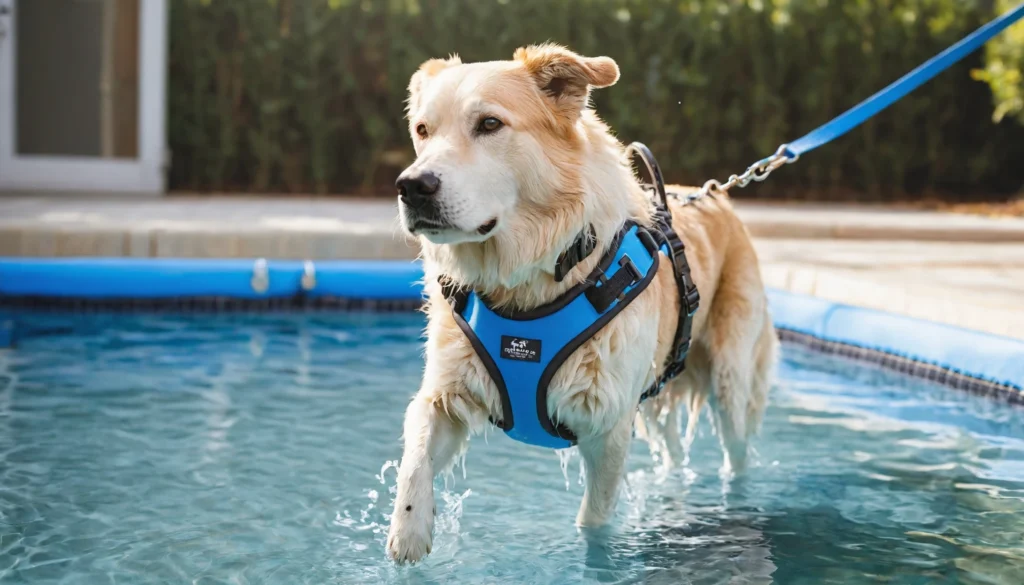
The Importance of Training Older Dogs
Just because your dog is aging doesn’t mean their learning days are over. In fact, training older dogs can be incredibly beneficial not only for reinforcing good behavior but also for keeping their minds active and sharp. Mental stimulation is just as important as physical exercise in a senior dog’s daily routine.
Keeps the Mind Sharp and Prevents Cognitive Decline
As dogs get older, they may begin to show signs of cognitive decline, such as confusion, disorientation, or changes in routine behavior. Regular training helps slow this process by keeping their brain engaged. Simple commands, puzzle games, or even learning new tricks provide the mental workout senior dogs need to stay alert and responsive.
Repetition and gentle encouragement work best with older dogs. Avoid overwhelming them with too many new tasks at once. Instead, use short, consistent sessions with lots of positive reinforcement to make learning enjoyable.
Reinforces Safe and Calm Behaviors
Senior dogs may face mobility issues or sensory loss that impact how they interact with their environment. Training older dogs helps reinforce safe habits like walking slowly on stairs, waiting at doors, or responding to hand signals if hearing declines. These small adjustments in training can dramatically improve both their confidence and safety.
Additionally, retraining can address undesirable behaviors that develop later in life, such as excessive barking, restlessness, or anxiety. With age-specific techniques and patience, many of these issues can be reduced or completely resolved.
Strengthens Your Bond
Training isn’t just about obedience, it’s a bonding experience. Spending time teaching your senior dog reminds them they’re still a valued part of the family. That connection fosters trust, comfort, and emotional stability as they navigate the changes of aging.
Building a Comfortable Home for Senior Dogs
Creating a senior-friendly environment is an essential part of proper senior dog care. As your dog ages, their physical needs and sensitivities change. Making thoughtful adjustments to your home can help your dog feel more secure, relaxed, and pain-free in their golden years.
Provide Supportive Beds and Resting Areas
Older dogs often struggle with stiff joints and arthritis, making a good bed more than just a comfort, it’s a necessity. Orthopedic dog beds are made to relieve pressure points and provide support for aging bodies. This is a cornerstone of senior dog care that promotes better sleep and reduces discomfort.
Place their bed in a quiet, low-traffic area where they won’t be disturbed. If your dog has trouble moving around the house, consider adding multiple resting spots, especially on different floors, to reduce the need for stairs.
Make Navigation Easy and Safe
Mobility is a common challenge in aging pets, and making your home safer can prevent injury. Add non-slip rugs or runners on slippery floors to improve traction. For dogs who struggle with steps or jumping onto furniture, pet ramps and stairs are valuable additions.
Keeping food and water bowls in accessible, consistent locations also supports effective senior dog care. Avoid rearranging furniture or blocking your dog’s usual pathways, as older dogs may become disoriented more easily.
Consider Sensory Decline
As dogs reach their senior years, they may experience a decline in hearing or vision. To help them adjust, keep lighting consistent and avoid clutter. Use verbal cues and gentle touches to guide them, and rely on scents to mark familiar areas, such as their bed or feeding station.
Making these simple, practical changes helps ensure your aging companion stays comfortable, confident, and happy at home.
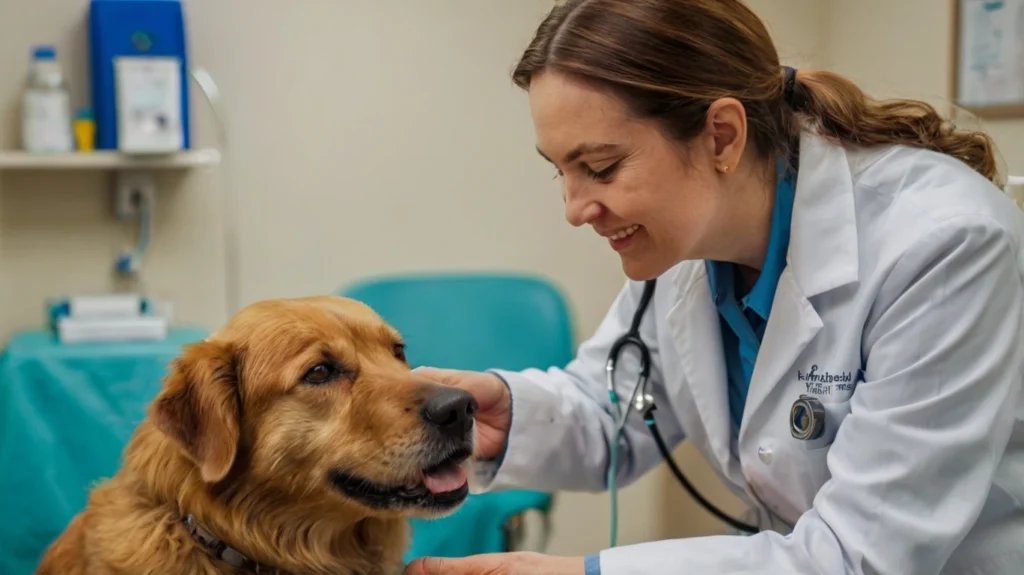
Vet Visits and Health Monitoring for Senior Dogs
Regular health checks are one of the most important aspects of senior dog care. As dogs get older, their chances of developing chronic conditions such as arthritis, kidney disease, and diabetes go up. Staying on top of their health through scheduled vet visits and careful monitoring at home can help catch issues early and sometimes even prevent them entirely.
Schedule Routine Vet Check-Ups
Unlike younger dogs who may only need annual vet visits, senior dogs should be seen at least twice a year. These wellness exams go beyond basic checkups they often include bloodwork, urine tests, and diagnostic screenings that can detect underlying health problems not visible on the surface.
Discuss any changes in behavior, appetite, or activity with your vet, even if they seem minor. Sudden weight loss, increased thirst, or confusion could point to more serious issues that require immediate attention.
Staying consistent with vaccinations, dental cleanings, and parasite control is also essential to long-term senior dog care.
Monitor Health at Home Between Visits
You are your dog’s first line of defense when it comes to health monitoring. Pay attention to signs of discomfort, limping, coughing, changes in bowel habits, or reluctance to eat or move. Tracking your dog’s weight, appetite, and energy levels over time helps you recognize shifts that might need veterinary attention.
Create a simple health journal to log symptoms, medication schedules, or any changes you observe. This will give your vet a clear picture of your dog’s ongoing condition.
Collaborating with Your Veterinarian to Enhance Quality of Life
Senior dogs may need ongoing medications or treatments, and open communication with your vet ensures you’re meeting their changing needs. With proactive care and timely intervention, you can greatly improve both the comfort and longevity of your furry friend.
Mental Enrichment and Emotional Well-Being in Senior Dogs
When it comes to senior dog care, most people focus on diet, exercise, or vet visits. However, keeping your senior dog mentally stimulated and emotionally connected is just as vital for their overall well-being. A happy, mentally engaged dog is more likely to stay active, responsive, and emotionally balanced as they age.
Engage Their Mind with Gentle Challenges
Cognitive decline is common in aging dogs, but that doesn’t mean their minds stop working. Regular brain games are a great way to keep them sharp. Try hiding small treats around the house, using food puzzles, or teaching them new, simple commands. These low-stress activities help stimulate their thinking without putting too much strain on their body.
Even a brief five-minute game or short, focused training session can improve attention and slow mental aging. Rotate the games and toys every few days to keep things interesting and prevent boredom.
Nurture Their Emotional Health Through Routine and Attention
Older dogs often become more emotionally sensitive. Loud noises, unfamiliar environments, or schedule changes can make them anxious or withdrawn. A consistent daily schedule that includes regular meals, playtime, and rest provides a sense of comfort and stability.
As part of responsible senior dog care, make time each day for quiet bonding. Gentle petting, brushing, or simply sitting beside your dog can help them feel safe and loved. Dogs are deeply social animals, and emotional neglect can lead to stress, which may impact their physical health.
Watch for Emotional and Behavioral Changes
Notice if your dog becomes easily confused, unusually vocal, or avoids interaction. These could be signs of emotional distress or early cognitive issues. Addressing them early with support and care will ensure your senior dog continues to feel valued and secure.
Conclusion: Bringing It All Together A Lifetime of Love for Senior Dogs
Caring for a senior dog is more than a duty, it’s a meaningful privilege. These loyal companions have given us years of love, and they deserve the same dedication in return. Senior dog care goes far beyond medical checkups; it includes everything from nutrition and exercise to emotional connection and a safe home environment.
Honor Their Aging Needs with Compassion
Each senior dog has unique needs based on their breed, size, and health history. But across the board, aging dogs benefit from a more thoughtful and attentive approach. This includes choosing food that supports joint and brain health, scheduling regular vet visits, and adjusting daily routines to match their energy levels.
Creating a calm, accessible living space and offering mental enrichment are small changes that have a big impact. When these elements come together, they help your dog feel comfortable, engaged, and loved every day.
Consistency and Observation Are Key
Successful senior dog care often depends on staying consistent and observant. Pay attention to changes in your dog’s habits, whether it’s eating less, moving slower, or acting more anxious. Small shifts may indicate bigger health or emotional issues that can be managed more effectively when caught early.
Also, keep in regular contact with your veterinarian and ask questions about what to expect as your dog ages. You are your dog’s advocate, and your attentiveness can dramatically improve their quality of life.
Celebrate Every Stage of Life
Your senior dog might be slowing down, but their life is still full of meaning and value. With patience, empathy, and love, you can ensure their later years are just as rich as their youth. In the end, senior dog care is about honoring a bond that has only deepened with time.
Frequently Asked Questions (FAQs)
What is the most important aspect of senior dog care?
The most important part of senior dog care is adapting to your dog’s changing needs. This includes providing a nutritious diet, regular vet visits, a safe home environment, and emotional support. Aging dogs may also require help with mobility, cognitive stimulation, and personalized health monitoring to maintain their quality of life.
Can older dogs still be trained?
Yes, absolutely. Training older dogs is not only possible but encouraged. While they may take a little longer to learn than younger dogs, senior dogs benefit from gentle, consistent training routines that stimulate their mind and reinforce good behavior. Keep sessions short, positive, and adapted to their energy level.
How do I manage my senior dog’s weight?
Dog weight management becomes increasingly important with age. Excess weight can aggravate arthritis and heart problems in senior dogs. Feed age-appropriate, low-calorie food, avoid excessive treats, and ensure they get gentle daily exercise like short walks or swimming. Your vet can help create a customized weight plan if needed.
What steps can I take to make my home more senior dog-friendly?
As part of senior dog care, making your home safer involves adding non-slip rugs, ramps for stairs, orthopedic beds, and accessible food and water bowls. Keep clutter out of walkways and avoid frequent furniture rearrangement to reduce confusion and the risk of injury.
Do senior dogs experience mental decline?
Yes, some dogs experience canine cognitive dysfunction, which is similar to dementia in humans. Symptoms may include confusion, anxiety, altered sleep patterns, and accidents in the house. Keeping their mind engaged through enrichment and games is an essential part of senior dog care and helps delay cognitive decline.
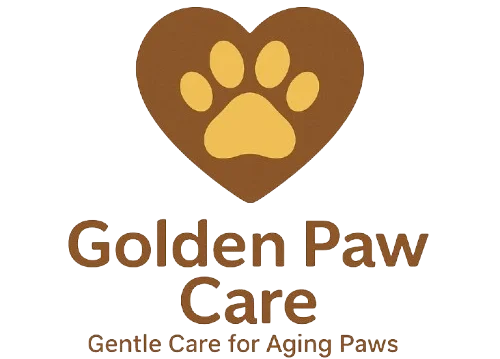
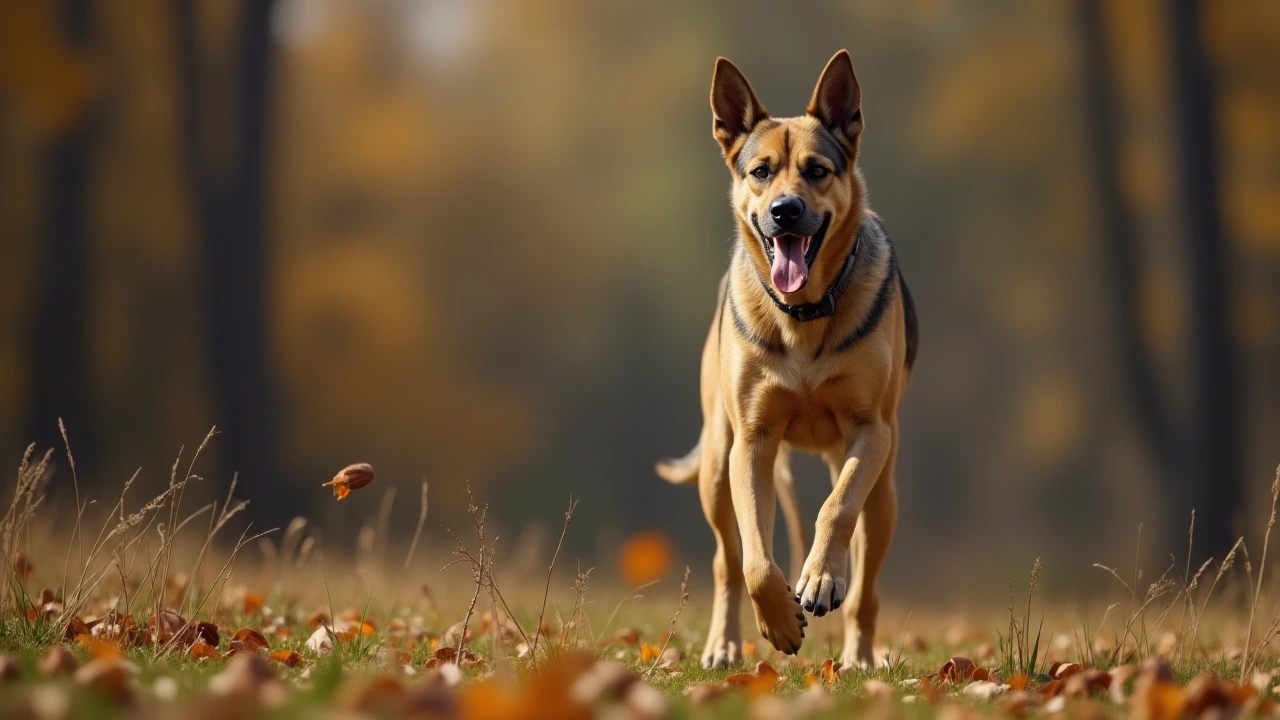
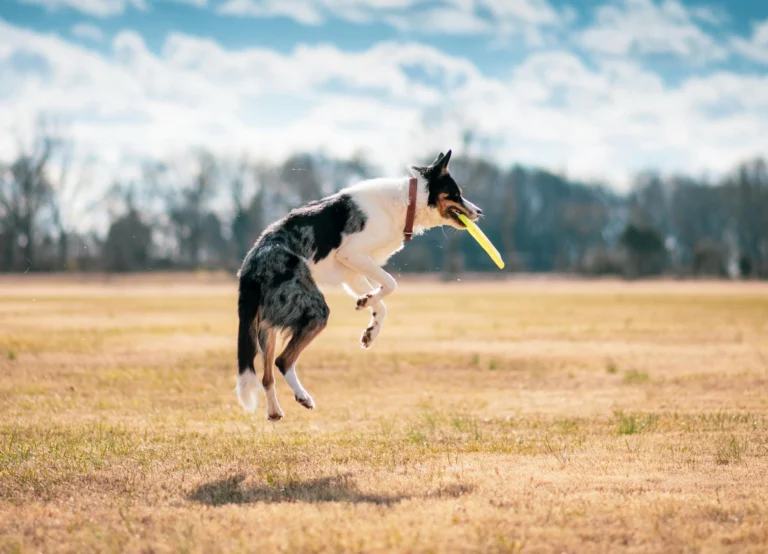
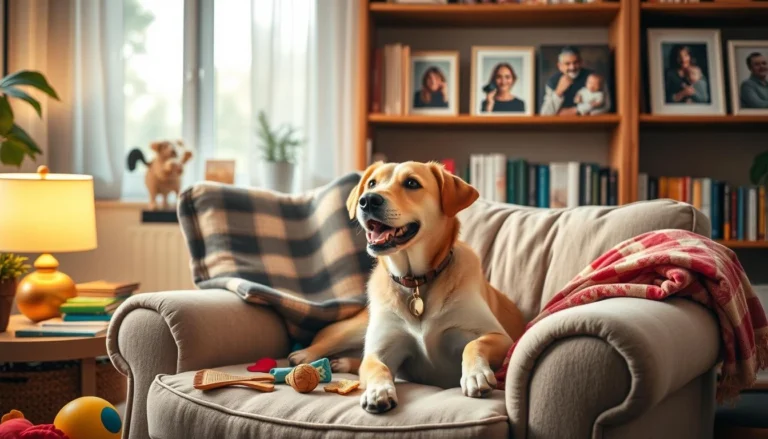


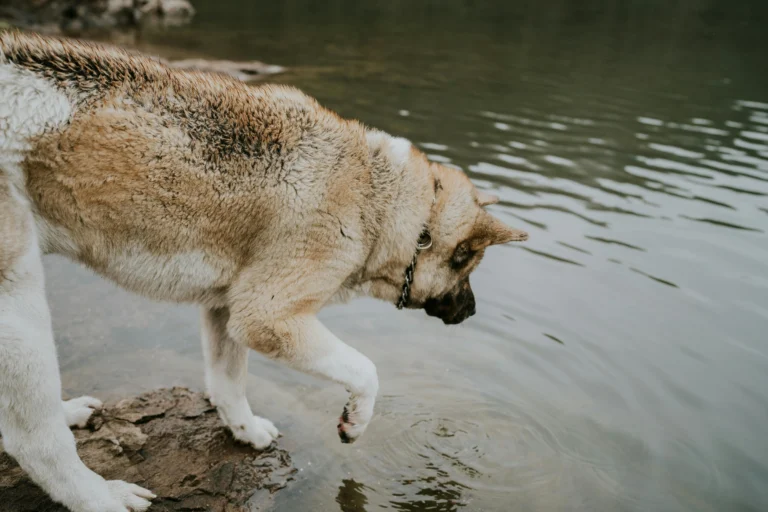
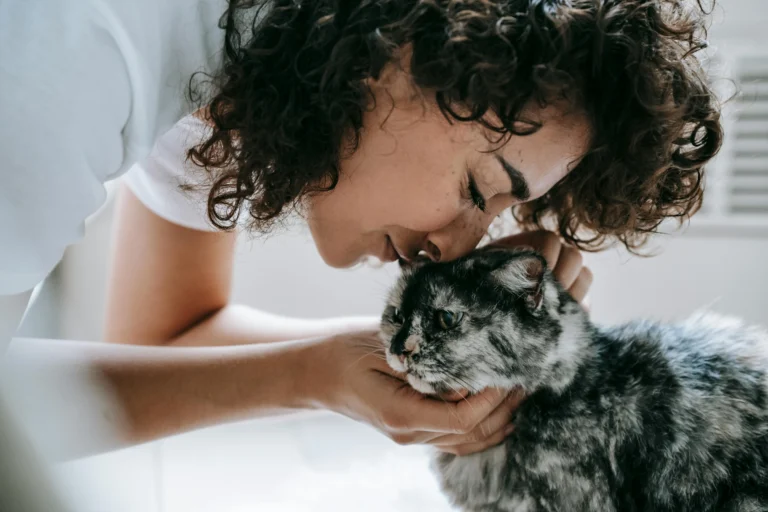
One Comment